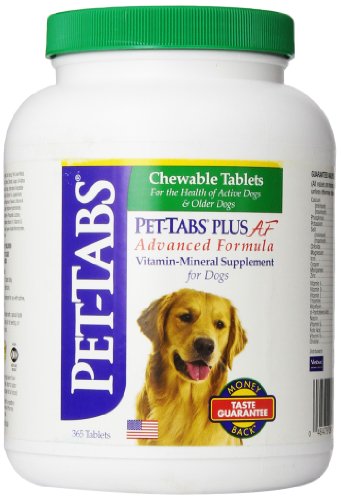Constant scratching, tail-chasing, coughing and wheezing, eye and nose discharges - if these symptoms can be observed on your pet dog, chances are very likely that he/she is suffering from allergies.
Yes, dogs, just like their masters can suffer from allergies. Roughly about 20 percent of the dogs living in our homes suffer from some allergy type. Major classifications of canine allergies are atopic dermatitis, flea allergy, food allergy and inhalant allergy.
Atopic dermatitis is skin allergy disease caused by hypersensitivity developed by your dog's immune system to several and very common substances like molds and dust mites.
If your dog scratches and licks himself very often (particularly licking and chewing the paws, abdomen and legs), and his/her ears are hot to the touch, he/she may be suffering from atopic dermatitis.
Check to see if your dog's saliva causes stains. A red to brown stain is another indicator that your dog is atopic. In persistent cases, the skin on the abdomen changes color from pink, to a bright red then to black. Flea allergy is the most common form of canine allergy. However, it is not the flea but the flea's saliva that your dog may be allergic to.
To find out if your dog has flea allergies, a skin allergy test is preformed. If it he/she is tested positive, a strict control regimen can reduce symptoms. Consult you're your vet as to what type of treatment is best for your pet. There is a wide array of choices ranging from pills to sprays to shampoos
Just like their masters, dogs are susceptible to allergens inhaled from the air. Pollen from trees, grass, and flowers, dust mites and molds are just some of the common culprits. However, unlike their masters who exhibit inhalant allergies through sneezing and coughing, dogs show their reactions through scratching and biting as well as chewing of feet and licking constantly. A less common reaction is recurrent infections in your dog's ears.
You can help alleviate the allergy by vacuuming frequently and dusting the areas your dog spends much time in (like his sleeping area). Dogs also exhibit allergies to the food they eat. And this is perhaps the most tedious to diagnose because food allergies can mimic any of the other allergies mentioned in this article. First thing to do is to remove all possible allergy causing ingredients from your pet's diet. You can do this by using a homemade meal of a protein and starch source your dog has not had before. Add gradually (one at a time for about a week), more ingredients into it. If symptoms return after adding a particular ingredient, then the possible allergen could be identified.
However, allergic reactions may not appear for about a week after consuming the allergen so be sure to confirm your findings with your vet. Once it has been verified, avoid the ingredient in the dog foods you'll subsequently feed your pet with.
Other symptoms of food allergies are vomiting, diarrhea, wheezing and sometimes, even changes in behavior.
You can help your pet and alleviate his allergy woes by bathing and conditioning your dog regularly. Contrary to what most people will tell you, you can never bathe your dog too often. Water helps to relieve your dog's skin and keeps it healthy. It also rinses off allergens from their body. Different kinds of shampoos are available to treat allergies, depending, of course, on your pet's particular condition.

 The Effects of Nicotine and Secondhand Smoke on Your Dogs
Credit: CDC (PHIL) - Public domain
The Effects of Nicotine and Secondhand Smoke on Your Dogs
Credit: CDC (PHIL) - Public domain
 How To Improve The Smell Of Your Dogs Breath
7 Ways To Improve Your Dogs Breath
We all love those exuber
How To Improve The Smell Of Your Dogs Breath
7 Ways To Improve Your Dogs Breath
We all love those exuber
 Dogs :: Dog Ears Can Be a Real Trouble Spot (Page 1 of 2)
For such a proportionately small area of your dog抯 body, ear
Dogs :: Dog Ears Can Be a Real Trouble Spot (Page 1 of 2)
For such a proportionately small area of your dog抯 body, ear
 Dogs :: Stomach Torsion in Dogs and How to Prevent It (Page 1 of 2)
Also known as gastric torsion, bloat, and GVD (gastric dilat
Dogs :: Stomach Torsion in Dogs and How to Prevent It (Page 1 of 2)
Also known as gastric torsion, bloat, and GVD (gastric dilat
 Clipping your Pet’s Nails
Clipping your Pet’s Nails
Clipping your Pet’s Nails
Clipping your Pet’s Nails